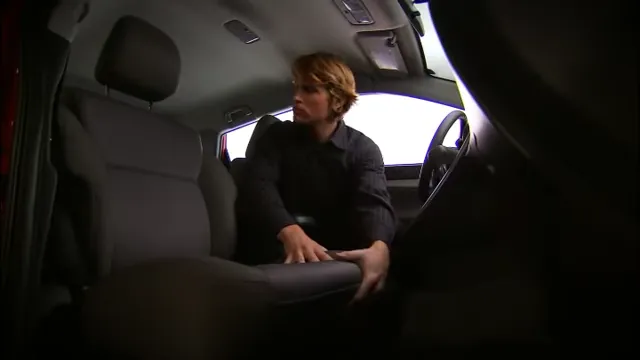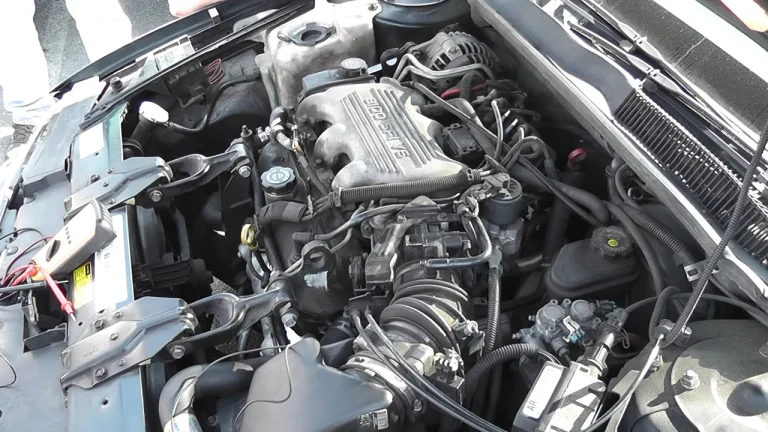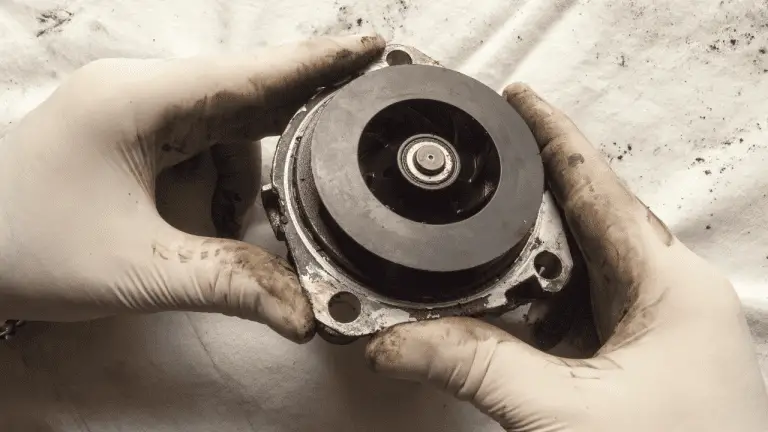I Hit a Curb With My Front Passenger Side (Must-Do Actions)
If you hit a curb with your front passenger side, it is important to assess the damage and have it inspected by a professional to ensure no structural or alignment issues have occurred. Introducing your car to a curb can result in damage that requires immediate attention.
From bent rims and suspension components to misaligned steering and potential tire damage, hitting a curb can have repercussions beyond just a scuffed tire or bumper. Therefore, it is crucial to have your vehicle inspected by a professional mechanic who can assess the extent of the damage and provide necessary repairs.
Taking prompt action ensures the safety and longevity of your vehicle, preventing potential issues down the road. So, don’t overlook the importance of addressing a curb collision promptly, no matter how minor it may seem.
Understanding The Damage Caused By Hitting A Curb
I Hit A Curb With My Front Passenger Side
Have you ever experienced the heart-sinking moment when you accidentally hit a curb with your front passenger side? It can happen in the blink of an eye, and the damage caused can vary depending on the intensity of the impact.
In this section, we will delve into understanding the different types of damage that may occur, the impact on the front passenger side, and the signs and symptoms of damage to look out for.
Types Of Damage That May Occur
When you hit a curb with your front passenger side, various types of damage can happen. It’s essential to be aware of these potential damages to assess the severity and take appropriate actions. Some possible types of damage include:
- Tire damage: Hitting a curb can result in tire sidewall damage, punctures, or even tire blowouts.
- Wheel damage: The impact can cause bent or cracked wheels, impacting their structural integrity.
- Suspension damage: The suspension system may be affected, leading to misalignment, bent control arms, or damaged shocks.
- Steering system damage: Hitting a curb might lead to misalignment or damage to the steering system components, affecting the overall control and handling of the vehicle.
Understanding these potential damages will help you gauge the level of urgency in addressing them and seeking professional assistance if necessary.
Impact On The Front Passenger Side
Hitting a curb with the front passenger side of the vehicle can generate a significant impact due to the proximity to the wheel and suspension components. The force of the impact can transfer directly to these crucial parts, potentially causing damage or misalignment.
Additionally, the front passenger side wheel may suffer more substantial consequences than other wheels due to the concentrated impact.
Signs And Symptoms Of Damage
Detecting the signs and symptoms of damage after hitting a curb is crucial for your safety and the longevity of your vehicle. Here are some indicators to look out for:
- Unusual noises: If you notice any strange noises, such as grinding, clicking, or knocking sounds, it could indicate damage to the wheel bearings, suspension, or steering components.
- Vibrations: Experiencing vibrations in the steering wheel or throughout the vehicle while driving could be a sign of wheel or suspension damage.
- Pulling to one side: If your vehicle tends to veer to one side, it may be a result of misalignment or damage to the front passenger side components.
- Uneven tire wear: Inspect your tires for uneven tread wear, as it could indicate suspension or alignment problems.
- Difficulty steering: If you find it challenging to turn the wheel smoothly or notice increased resistance, it may be due to damage in the steering system.
By staying vigilant and addressing these signs and symptoms promptly, you can prevent further damage and ensure the necessary repairs are carried out.
Hitting a curb with your front passenger side can cause various types of damage, impacting the wheels, suspension, and steering components. It’s important to be aware of the signs and symptoms of damage to address any issues promptly. Remember, safety should always be your top priority, so consider seeking professional help if needed.
Stay tuned for the next section where we will discuss the steps to take after hitting a curb.

Steps To Assess And Fix The Damage
You’re driving down the road and suddenly, you hit a curb with your front passenger side. It can be a nerve-wracking experience, but don’t panic! Assessing and fixing the damage can be easier than you think. Follow these steps to ensure the safety of your vehicle and get back on the road in no time.
Inspecting The Affected Area
Inspecting the affected area is the first step in assessing the damage caused by hitting a curb with your front passenger side. Here’s what you need to do:
- Take a close look at the tires: Check for any visible signs of damage such as cuts, bulges, or punctures. Pay attention to the sidewalls as they are more susceptible to damage from hitting a curb.
- Check the rims: Examine the rims for any visible cracks, dents, or scratches. These can indicate the extent of the impact and whether they need to be repaired or replaced.
- Look for misalignment: Park your vehicle on a level surface and observe if it sits level. Uneven height can suggest suspension or alignment issues caused by the impact.
Identifying Visible And Hidden Damages
To ensure your vehicle is safe to drive, it’s important to identify both visible and hidden damages resulting from hitting a curb. Consider the following:
- Steering and handling issues: If you notice any changes in the steering response or difficulty in controlling the vehicle, there may be underlying damage to the steering components or suspension.
- Suspension damage: Look for signs of a sagging or uneven ride height. This could indicate damage to the suspension system, including control arms, struts, or shocks.
- Undercarriage inspection: Get down on the ground and inspect the undercarriage for any visible damages such as bent or broken components. Pay attention to the front passenger side where the impact occurred.
Seeking Professional Help If Necessary
While some damages may be minor and can be fixed on your own, it’s crucial to seek professional help in certain situations. Consider the following scenarios:
- Severe tire damage: If the tires show signs of extensive damage or are completely deflated, it’s recommended to consult a tire specialist for a thorough examination and possible replacement.
- Alignment or suspension issues: If you notice persistent steering problems or a drastic change in the vehicle’s handling, it’s best to have a professional mechanic inspect the alignment and suspension components to prevent further damage.
- Wheel rim damage: In cases where the rims are cracked or bent, it’s generally safer to have them inspected and repaired or replaced by a qualified technician. This ensures the structural integrity of the wheel.
Remember, your safety and the safety of those on the road should always be a top priority. Taking the necessary steps to assess and fix the damage caused by hitting a curb with your front passenger side will help ensure a smooth and secure driving experience.
Diy Techniques To Repair Minor Damage
If you’ve accidentally hit a curb with your front passenger side, it’s important to take action and repair any minor damage to your vehicle. Not only can this improve the appearance of your car, but it can also prevent further issues down the line.
Here are some diy techniques to help you repair the damage:
Evaluating The Severity Of The Damage
Before you begin the repair process, it’s crucial to assess the severity of the damage. Here’s how to evaluate the damage caused by hitting a curb:
- Inspect the affected area closely to identify any scratches, dents, or other visible damage.
- Check for any misalignment of the wheels or suspension components.
- Look for any signs of fluid leakage or damage to the undercarriage.
- Evaluate the condition of the tires and rims to ensure they are not compromised.
Tools And Materials Needed For Repairs
To fix minor damage resulting from hitting a curb, gather the following tools and materials before you start:
- Touch-up paint or car paint that matches your vehicle’s color
- Sandpaper or a sanding block
- Bondo or a similar body filler
- A putty knife
- Rubbing compound
- Polishing compound
- Microfiber cloths
- Automotive primer
- Clear coat spray
Step-By-Step Repair Guide
Follow these steps to repair minor damage caused by hitting a curb:
- Clean the damaged area: Start by thoroughly cleaning the affected area using soap and water or a dedicated car washing solution. This ensures that no debris or dirt interferes with the repair process.
- Sand the damaged area: Gently sand the damaged area using sandpaper or a sanding block. This helps to level any scratches or rough edges. Be sure to feather the edges of any chipped or cracked paint as well.
- Apply body filler: If there are any dents or deeper scratches, apply a small amount of body filler or bondo to fill them in. Use a putty knife to spread the filler evenly and allow it to dry according to the manufacturer’s instructions.
- Sand the filled area: Once the body filler is dry, sand the filled area until it is smooth and even with the surrounding surface. This creates a seamless finish.
- Clean and prime: Clean the repaired area once again to remove any dust or residue. Then, apply automotive primer to help the paint adhere properly. Follow the instructions on the primer for drying time.
- Apply touch-up paint: Using a steady hand, carefully apply the touch-up paint or car paint that matches your vehicle’s color. Let each coat dry before applying another layer. Apply multiple coats as needed for complete coverage.
- Blend and polish: Once the paint has dried, use rubbing compound or polishing compound to blend the repaired area with the surrounding paintwork. This helps to achieve a smooth and even finish.
- Apply clear coat: To protect the repaired area, apply a clear coat spray. This adds an extra layer of gloss and durability to the paintwork. Follow the instructions on the clear coat for drying time.
By following these diy techniques, you can effectively repair minor damage caused by hitting a curb. However, it’s important to note that more severe damage may require professional assistance. Take care of your vehicle and ensure it looks its best, even after an unfortunate curb mishap.
Addressing Wheel And Suspension Damage
You’re driving along, and suddenly you hear that dreaded sound of hitting a curb. Panic sets in as you worry about potential damage to your car’s front passenger side. One area that may be directly affected is the wheel and suspension.
In this section, we will discuss how to recognize signs of wheel and suspension damage, the importance of seeking professional assistance for repairs, and the significance of realignment and balancing.
Recognizing Signs Of Wheel And Suspension Damage
- Uneven tire wear: Look for signs of uneven wear on your tires, such as bald spots or excessive tread wear on one side.
- Pulling to one side: If your vehicle veers to one side when driving on a straight road, it could indicate wheel misalignment or suspension issues.
- Steering wheel vibration: Experiencing excessive vibrations through the steering wheel can indicate problems with your wheel or suspension components.
- Abnormal noises: Listen for any unusual sounds, such as clunking, rattling, or squeaking, especially when going over bumps or making turns.
Seeking Professional Assistance For Repairs
- Diagnostic expertise: Qualified professionals have the knowledge and tools to accurately diagnose wheel and suspension damage.
- Extensive experience: Professionals have years of experience handling various car issues, enabling them to identify the root cause of your car’s problem.
- Effective repairs: They can efficiently and effectively repair any wheel or suspension damage, ensuring the safety and optimal performance of your vehicle.
- Warranty coverage: Many professional repair shops offer warranties on their services, providing you with peace of mind.
Importance Of Realignment And Balancing
- Enhances tire longevity: Proper wheel alignment and balancing can help prevent premature tire wear, ensuring that your tires last longer.
- Improved fuel efficiency: Misaligned wheels can increase rolling resistance, leading to decreased fuel efficiency. Realignment helps optimize fuel consumption.
- Enhanced handling and safety: Misaligned wheels affect your vehicle’s stability and handling, compromising safety. Realignment ensures proper handling and reduces the risk of accidents.
- Smoother ride: Balancing your wheels eliminates vibrations and irregularities, providing a smoother and more comfortable driving experience.
Seeking professional assistance for wheel and suspension repairs is essential to address any damage effectively. Whether it’s recognizing signs of damage, identifying the root cause, or performing realignment and balancing, professionals are equipped with the expertise to keep your car running smoothly.
Don’t ignore potential issues – address them promptly to maintain your vehicle’s performance and ensure optimal safety for you and your passengers.
Preventive Measures To Avoid Future Mishaps
Driving near curbs requires extra caution to prevent any mishaps or damage to your vehicle. Here are some preventive measures you can take to ensure a safe driving experience:
Tips For Safe Driving Near Curbs:
- Maintain a safe distance: Always maintain a safe distance from the curb while driving. This will give you enough space to maneuver and avoid any unexpected obstacles or obstructions.
- Be mindful of your surroundings: Pay close attention to your surroundings when driving near curbs. Look out for pedestrians, cyclists, or any other vehicles that may be present. This will help you anticipate potential risks and take appropriate action to avoid accidents.
- Slow down on turns: When making a turn near a curb, it is important to reduce your speed. Sharp turns at high speeds can increase the risk of hitting the curb. Slow down and take the turn smoothly to maintain control of your vehicle.
- Use your mirrors effectively: Utilize your side and rearview mirrors effectively to assess your distance from the curb. By regularly checking your mirrors, you can ensure that you are maintaining a safe position on the road and avoid any unintentional collisions.
Regular Vehicle Maintenance:
- Check your tire pressure: Proper tire pressure is crucial for maintaining vehicle control and stability. Regularly check your tire pressure, especially before long drives or trips. Correct tire pressure reduces the chances of hitting curbs due to loss of control or tire blowouts.
- Alignment and suspension checks: Misaligned wheels or faulty suspension can lead to an increased risk of hitting curbs. Get your vehicle’s alignment checked regularly to ensure smooth handling and reduce the chances of veering towards curbs unintentionally.
- Brake inspection: Faulty brakes can compromise your ability to stop quickly in emergency situations. Regular brake inspections and maintenance can help prevent accidents caused by inadequate stopping power.
Installing Protective Accessories:
- Curb alert systems: Consider installing a curb alert system in your vehicle to provide an additional layer of protection. These systems use sensors to detect curbs and give you warnings to prevent collisions.
- Mud flaps and side skirts: Mud flaps and side skirts can act as protective shields for your vehicle’s body, especially near the wheels. They help minimize damage from curb contact and protect against debris kicked up from the road.
- Wheel guards: Wheel guards or rim protectors provide a barrier between your wheels and curbs, helping to prevent scratches and damage. These accessories are especially useful in tight parking spots or narrow roads.
Remember, preventive measures play a crucial role in avoiding future mishaps when driving near curbs. By following these tips for safe driving, maintaining your vehicle regularly, and installing protective accessories, you can significantly reduce the risks of curb-related accidents or damage.
Stay vigilant and prioritize safety during your travels.
Conclusion
After hitting a curb with your front passenger side, it’s important to address the issue promptly. Ignoring the damage can lead to more severe and costly problems down the road. Start by visually inspecting the affected area to assess the extent of the damage.
Look for visible signs like dents, scratches, or misalignment. If the damage is significant, seeking a professional’s opinion is recommended. They will have the expertise to accurately identify any underlying issues and recommend the appropriate repairs. Remember, even seemingly minor curb hits can cause alignment problems, which can impact your vehicle’s overall performance and safety.
Taking care of the problem early on will save you money in the long run and ensure your vehicle remains in optimal condition. So, if you’ve hit a curb with your front passenger side, don’t delay addressing the issue – prioritize your vehicle’s well-being.
- Why Are My Car Headlights Not Bright Enough? - May 9, 2024
- How Long Can You Drive With An EVAP Leak? - May 9, 2024
- What Does B Stand for in a Car? [Full Guide] - May 9, 2024




